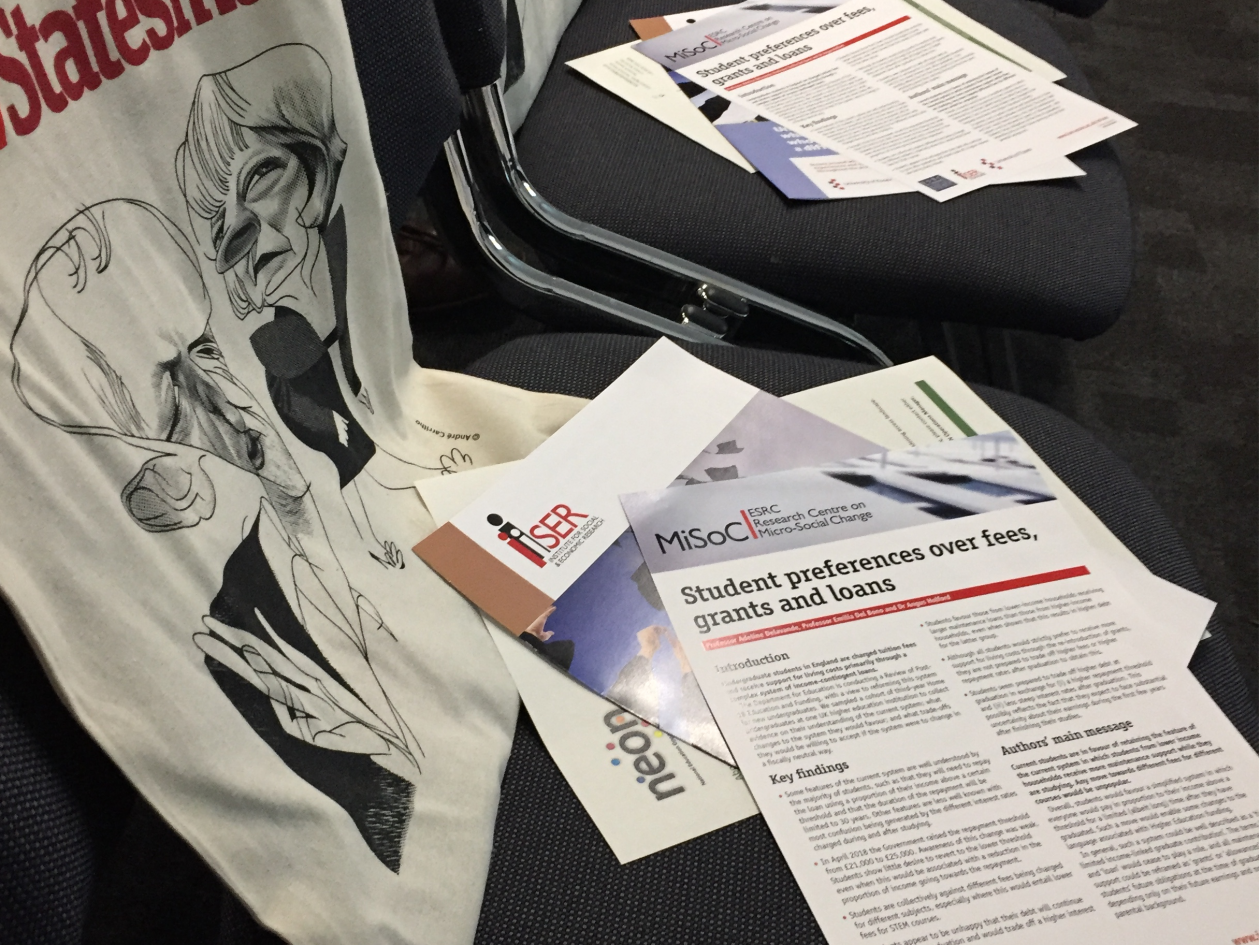Dr Angus Holford has presented new research on students’ understanding and preferences for funding higher education, as part of a prestigious panel discussion organised by the New Statesman at the Labour and Conservative party conferences, in collaboration with the National Education Opportunities Network (NEON).
The research, conducted amongst a cohort of final year students, found that most students do not understand the high rates of interest they are charged on their loans for fees and living costs.
Dr Holford said:
“The greatest problem is that students don’t understand what they’ve signed up to. They underestimate the interest rate they’re charged during their studies. And they want more money to live on during their studies, but find it very difficult to translate any change in upfront support into the price they pay down the line.
But students are clear in what matters most to them: Students are strongly resistant to the idea of different fees for different subjects, even if they’d expect personally to benefit. Irrespective of their own family background, students are strongly in favour of those from lower-income households receiving more financial support during their studies. And their biggest anxieties for their post-graduation finances are about making payments when their earnings are low.
With the current Department for Education-led ‘Review of Post-18 Education and Funding’ there’s an opportunity to move the system in line with what matters most to students, and to make it more transparent.
One way to achieve this could be to have students sign a contract to pay a constant fraction of their earnings above some threshold for a fixed period of time after they have left university. This would retain and strengthen the principal that those who benefit from Higher Education contribute to its cost. Perhaps more importantly, it would allow us to do away with the unhelpful and threatening language of “fees”, “loans” and “debt” altogether.”
Read our one-page Explainer on the research findings or the full report here or Angus Holford’s blog post for The New Statesman here
